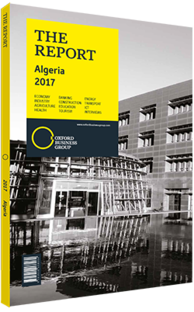Wissam El Moukahal, CEO, Entreprise de Transport Algérienne par Câbles (ETAC): Interview

Interview: Wissam El Moukahal
What is the key to success for joint ventures between foreign companies and public entities?
WISSAM EL MOUKAHAL: To create a sustainable and profitable joint venture between an Algerian public entity and a foreign firm, the join venture needs to fulfil a need in the market. There should be a human dimension and a skills transfer from the foreign company to the Algerian counterpart. It should materialise through a training plan and a mixed management style, resulting in a newly created firm that promotes the exchange of best practices. Second, there is an economic dimension that should result in local job creation and an expansion of economic activity in the country. The state should also maintain its investments to help sustain the company’s growth, in exchange for the development of innovative and dedicated tools that answer local operational challenges. Lastly, there should be an industrial dimension that guarantees long-term sustainability of the activity, enabling the joint venture to adapt to a changing economic landscape.
What are the economic, social and ecological advantages of cable transportation in Algeria?
EL MOUKAHAL: Algeria’s main cities are hilly. Ropeway transport is sustainable, safe, silent and eco-friendly, and adapts perfectly to this kind of topography. Using electrical power, ropeway transport does not release greenhouse gases. It can also serve remote areas that are difficult or impossible to reach with traditional shared transportation means.
It is also fast: in the suburb of Oued Koriche-Bouzaréah, a cable car journey lasts 12 minutes, while the same journey can take up to 45 minutes by car or bus. In addition, the investment costs of ropeways are lower than that of mass transportation. The execution length of a project is also short, which makes it an attractive solution for governments aiming to offer a quick transport solution to commuters.
How has cable transport evolved in the country?
EL MOUKAHAL: The Algerian authorities have for a long time integrated ropeway transport within their urban development plan. The first cable car was introduced in Algiers 1956, and this means of transport hasn’t stopped expanding since.
With the current construction of two new lines in Algiers and Tizi Ouzou, there will soon be a total of 12 cable car installations across the country. Algerian people consider cable cars a standard form of urban transportation, on a par with buses, trams and underground systems.
To what extent could Algeria become an international hub for cable transportation?
EL MOUKAHAL: Algeria has the largest number of ropeway transport installations in the world, offering an annual passenger capacity of 200m. The country will also soon own one of the world’s most modern training centres in this sector. It will train Algerian teams in key areas of cable transportation with the aid of specific evaluation tools, e-learning modules and the first 3D cable car simulator.
What export potential is there in the segment?
EL MOUKAHAL: There are a number of possibilities in relation to exportation in this sector in terms of product and expertise. The country’s authorities have set up an important investment programme for the creation of new urban cable lines. The roll out of this programme will complement the growth of the national economy. ETAC will set up a factory to assemble cable cars for the needs of the local market. We will also evaluate the export potential of the African continent, and offer courses to foreign workers within the training centre.
Algeria is undoubtedly an important country in terms of urban cable transport, and will proceed to play an even bigger role in this area in the future.
You have reached the limit of premium articles you can view for free.
Choose from the options below to purchase print or digital editions of our Reports. You can also purchase a website subscription giving you unlimited access to all of our Reports online for 12 months.
If you have already purchased this Report or have a website subscription, please login to continue.

